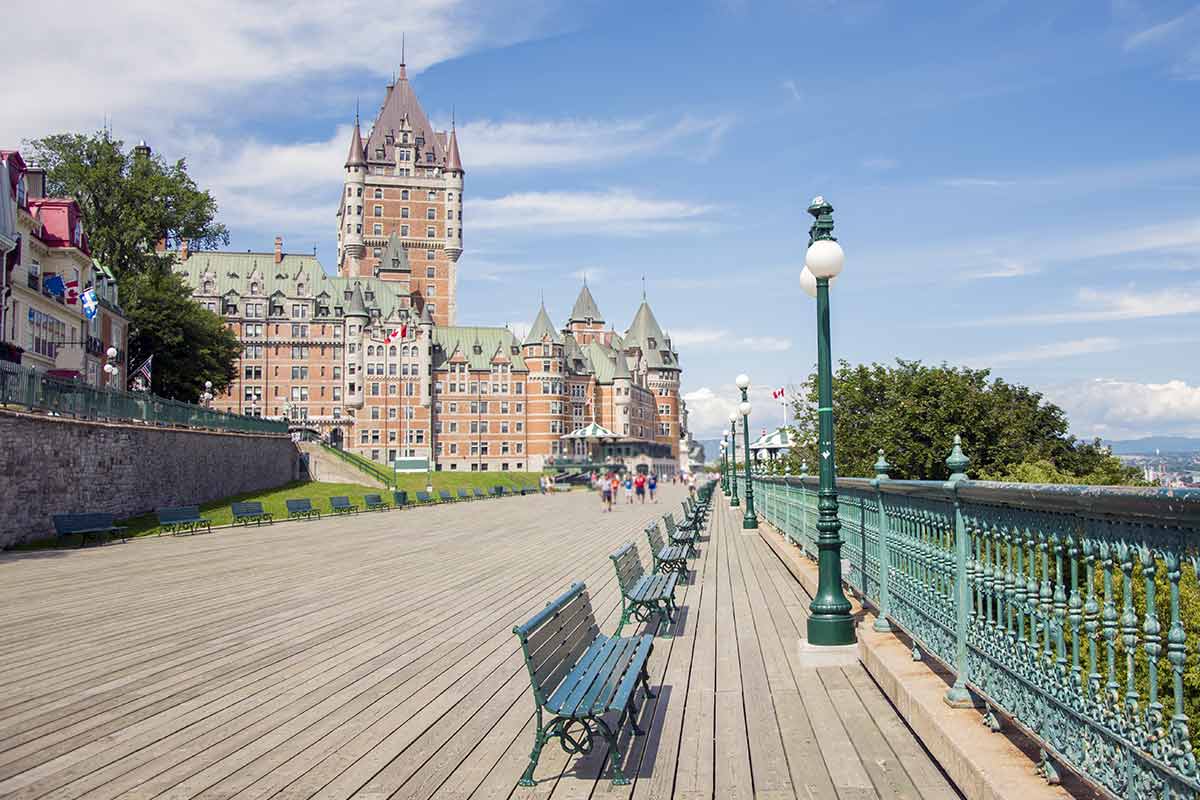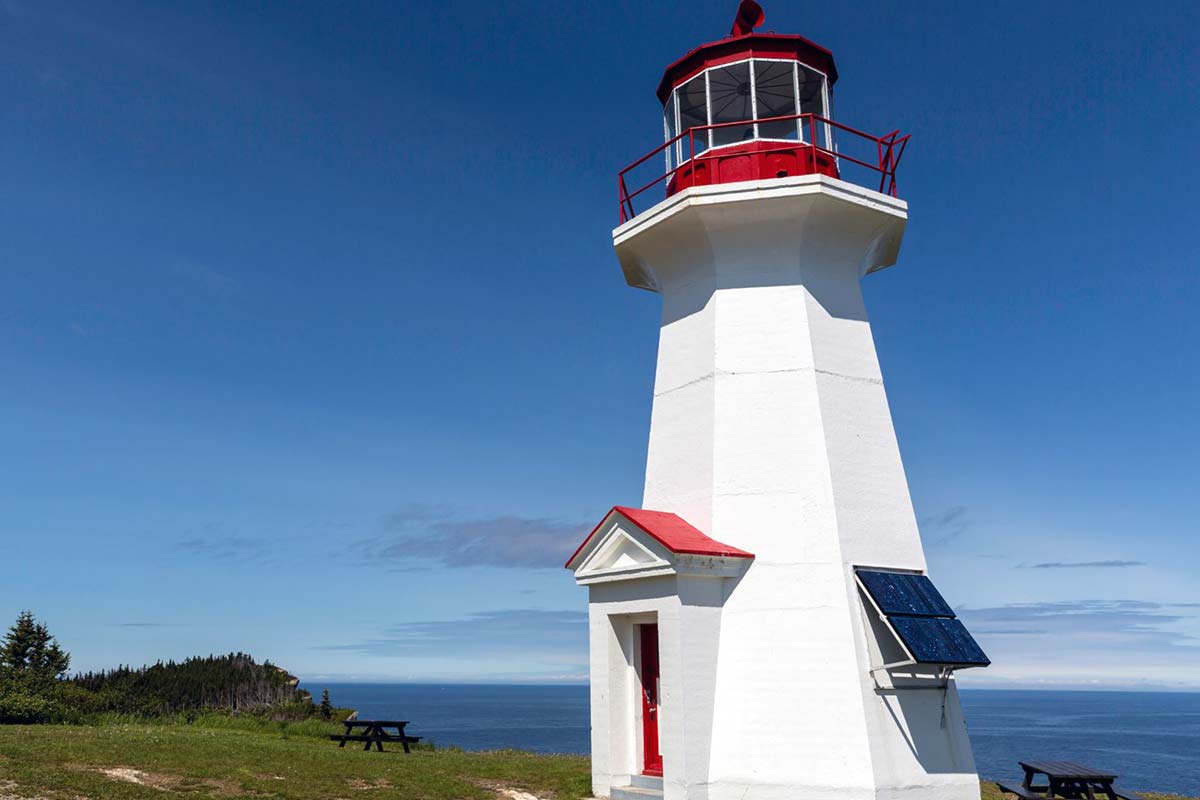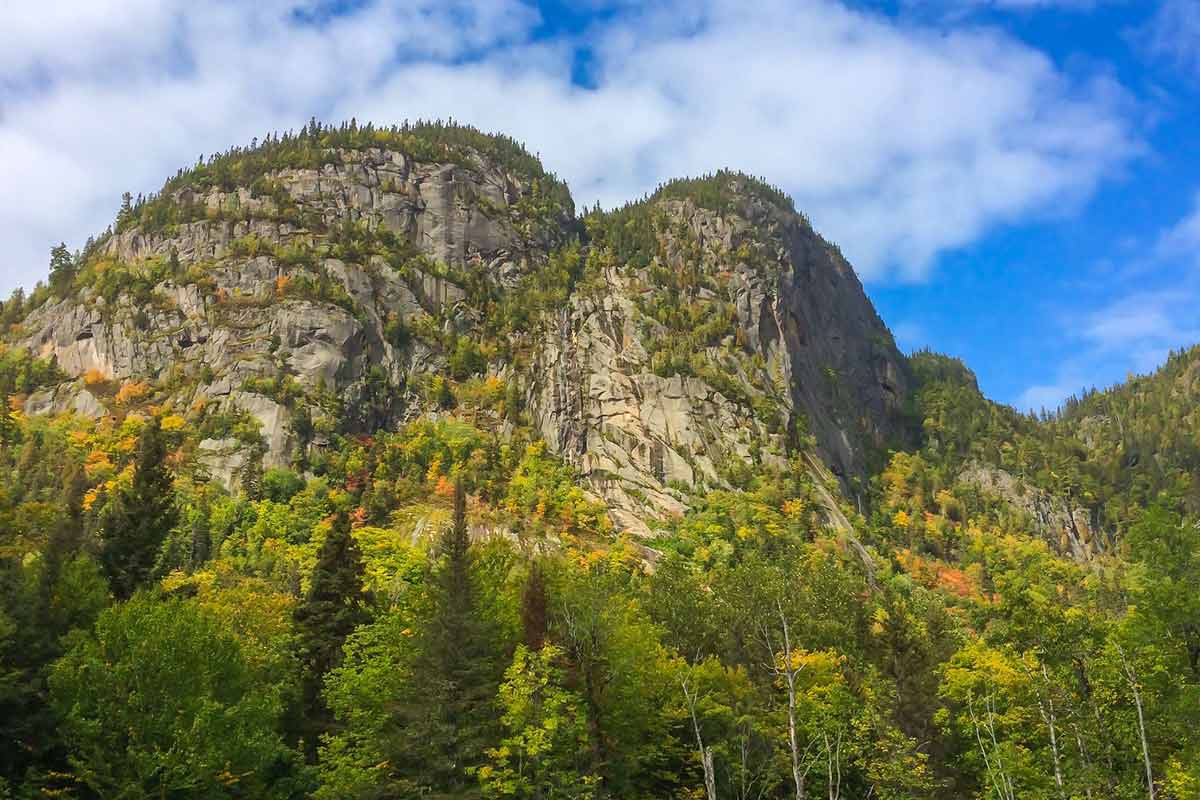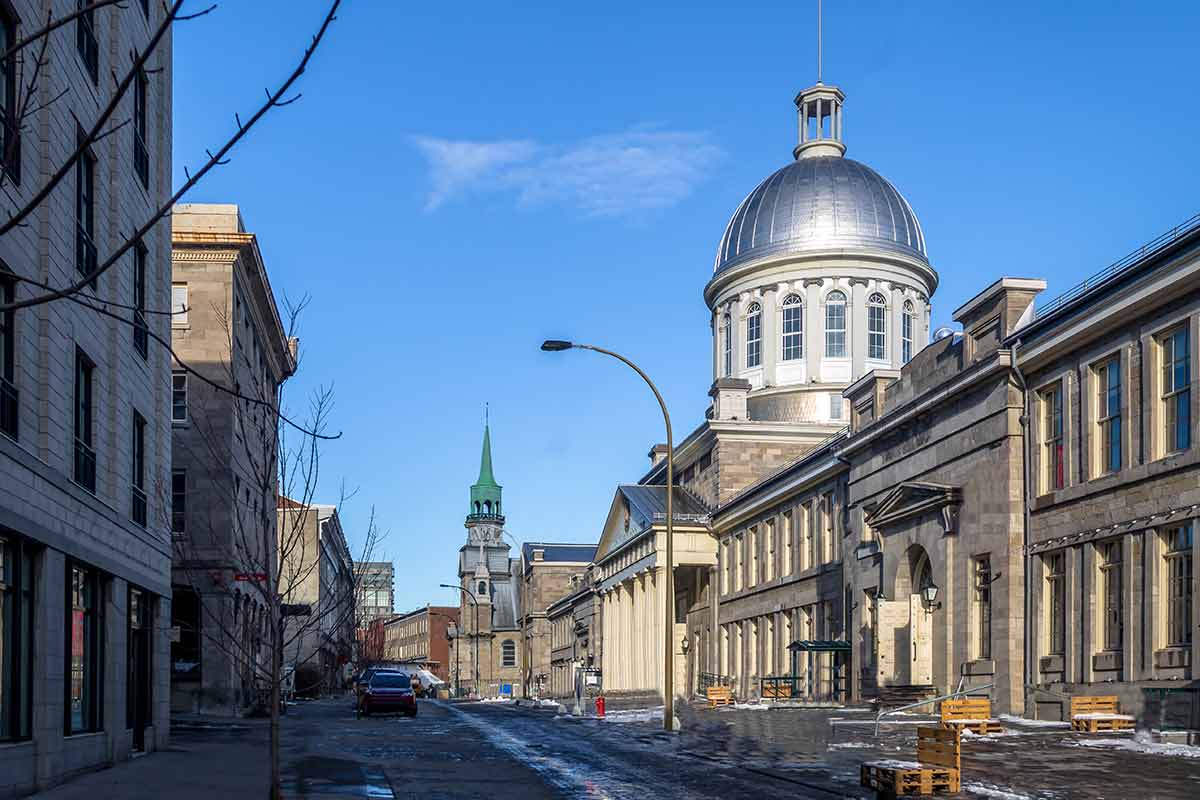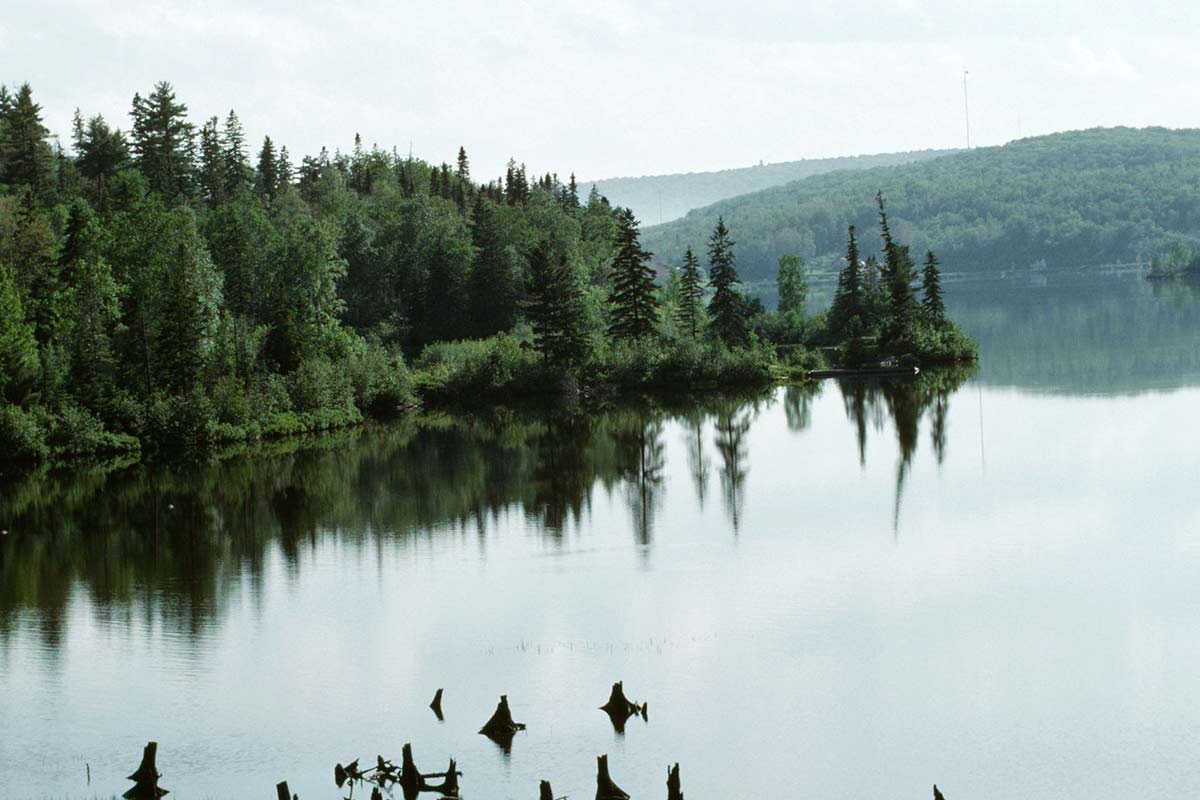Quebec is full of amazing road trip spots. Top picks include Quebec City, Charlevoix, the Eastern Townships, Gaspé Peninsula, Saguenay–Lac-Saint-Jean, the Laurentians, the Ottawa-Montreal scenic route, the Route des Vins, Abitibi-Témiscamingue, and Montérégie—each offering unique views, activities, and local charm.
Quebec is one of Canada’s most road trip–worthy provinces, offering dramatic landscapes, rich culture, and a strong sense of place. Whether you're a nature lover, history buff, foodie, or weekend adventurer, Quebec’s routes connect stunning natural wonders with charming towns and world-class cuisine.
This guide not only highlights the 10 top road trip destinations in Quebec but also includes essential travel tips, estimated driving times, and the best seasons to visit. So pack your bags, fill up your tank, and get ready for the ride of a lifetime.
1. Quebec City and Île d'Orléans
- Distance from Montreal: ~2.5 hours (270 km)
- Perfect for: History lovers, foodies, romantic getaways
- Best time to travel: May to October
- Travel tips: Park outside Old Quebec to avoid steep parking fees. Île d'Orléans is best explored by car or bike—take your time to enjoy local produce stands and viewpoints.
Quebec City’s European charm shines through its cobblestone streets, fortified walls, and elegant architecture. Visit the iconic Château Frontenac and enjoy the views from the Dufferin Terrace. Then, drive just 15 minutes to Île d'Orléans, known for its berry farms, cider houses, and artisan chocolatiers. The contrast between urban sophistication and island tranquility makes this an unbeatable first stop.
2. Charlevoix Region
- Distance from Quebec City: ~1.5 to 2.5 hours (120–150 km depending on the town)
- Perfect for: Scenic drives, art lovers, luxury travelers
- Best time to travel: June to early October
- Travel tips: Drive Route 138 along the St. Lawrence River for the most scenic experience. Book accommodations in advance in peak season.
With rolling hills and riverside villages, Charlevoix is one of Quebec’s most artistic and naturally beautiful regions. Stop in Baie-Saint-Paul for galleries and farm-to-table restaurants. In La Malbaie, you’ll find riverfront resorts and access to Grands-Jardins National Park. For adventure, consider a whale-watching cruise in Tadoussac.
3. Eastern Townships (Cantons-de-l'Est)
- Distance from Montreal: ~1.5 to 2 hours (120–150 km)
- Perfect for: Wine lovers, cyclists, fall foliage seekers
- Best time to travel: September to October for fall colours, June to August for wine tours
- Travel tips: Take scenic back roads instead of highways to really enjoy the landscapes. Many wineries offer picnic areas—bring snacks!
Explore towns like Magog, Sutton, and Bromont, where lake views, bike paths, and wine tasting opportunities abound. The area’s French-English heritage makes it culturally rich and welcoming. From mountain biking to spa treatments, the Eastern Townships offer a refined and relaxing getaway.
4. Gaspé Peninsula (Gaspésie)
- Distance from Quebec City: ~9–12 hours (900 km for full loop)
- Perfect for: Adventure seekers, photographers, wildlife enthusiasts
- Best time to travel: June to September
- Travel tips: Break the drive into 4–7 days to explore fully. Pack snacks and fuel up in advance—gas stations can be sparse.
This epic coastal loop around the Gaspé Peninsula is a bucket-list road trip. Highlights include Forillon National Park, Percé Rock, and Bonaventure Island. Camp, hike, whale-watch, and discover lighthouses perched atop dramatic sea cliffs. It's a remote, wild journey worth every kilometer.
5. Saguenay–Lac-Saint-Jean
- Distance from Quebec City: ~2.5 to 3.5 hours (230–300 km)
- Perfect for: Outdoor lovers, families, geology buffs
- Best time to travel: June to early September
- Travel tips: Rent kayaks for the best views of the fjord. The regional specialty is blueberries—try them fresh or in local pastries.
Home to one of the world's longest fjords, this region is tailor-made for nature experiences. From kayaking the Saguenay Fjord to hiking in Saguenay Fjord National Park, outdoor adventure is front and center. Visit the Val-Jalbert ghost town for a step back in time.
6. Laurentians (Les Laurentides)
- Distance from Montreal: ~1.5 to 2 hours (100–150 km)
- Perfect for: Families, couples, spa retreats
- Best time to travel: June to October; December to March for winter activities
- Travel tips: Try weekday travel to avoid weekend traffic. Mont-Tremblant offers year-round activities—book early for ski season.
The Laurentians are perfect for a quick yet immersive escape. Drive through charming towns like Saint-Sauveur and Sainte-Adèle, or spend a weekend in Mont-Tremblant. Whether it’s canoeing in the summer or skiing in the winter, this region caters to all seasons.
7. Ottawa to Montreal Scenic Route (via Route 148)
- Distance: ~2.5 to 3 hours (200 km)
- Perfect for: Casual explorers, nature-lovers, weekend warriors
- Best time to travel: May to October
- Travel tips: Bring binoculars—there are several birdwatching spots along the Ottawa River. Stop at Gatineau Park for short hikes or a picnic.
Instead of speeding along Autoroute 50, take the slow and scenic Route 148. Highlights include Gatineau Park’s Pink Lake and Luskville Falls, as well as small towns with local eateries and riverside views. It’s the perfect route for a relaxed weekend.
8. Route des Vins (Wine Route), Brome-Missisquoi
- Distance from Montreal: ~1.5 hours (120 km)
- Perfect for: Wine and cheese lovers, couples, foodies
- Best time to travel: August to October (harvest season)
- Travel tips: Designate a driver or plan to stay overnight—many vineyards offer accommodation. Combine with a visit to the Eastern Townships.
This official wine route takes you through 20+ vineyards nestled in the peaceful Brome-Missisquoi region. Stop in towns like Dunham and Frelighsburg, and enjoy tastings, vineyard tours, and cheese pairings. It’s ideal for a slow-paced, indulgent escape.
9. Abitibi-Témiscamingue
- Distance from Montreal: ~7–8 hours (600–700 km)
- Perfect for: Wilderness adventurers, cultural travelers, solitude seekers
- Best time to travel: June to September
- Travel tips: Bring bear spray and bug repellent—this is true backcountry. Learn about Indigenous culture at local interpretive centers.
Remote and wild, Abitibi-Témiscamingue offers serene lakes, dense forests, and deep cultural roots. Towns like Rouyn-Noranda and Val-d’Or are gateways to this natural playground, where you can fish, paddle, or simply disconnect. It’s a meaningful destination for those looking to explore beyond the ordinary.
10. Montérégie
- Distance from Montreal: ~30 to 90 minutes (30–100 km depending on the town)
- Perfect for: Day trips, families, seasonal activities
- Best time to travel: Spring (for sugar shacks), Fall (for apple picking)
- Travel tips: Avoid weekends during apple season if you want to skip crowds. Check seasonal hours for orchards and sugar shacks in advance.
Montérégie is a rural region rich in traditions. Whether you're sipping fresh cider in autumn or indulging in maple treats in spring, it’s a feel-good trip close to the city. Hike Mont-Saint-Hilaire, cruise the Richelieu River, or tour Fort Chambly for a mix of history and outdoor fun.
Road Trip Tips
Planning a memorable road trip through Quebec takes a bit of preparation. From the best travel seasons to what to pack and how to support local communities, these tips will help you enjoy the province’s stunning landscapes, rich culture, and charming towns with ease and confidence.
Best Time to Travel
The best time for a Quebec road trip is from late spring to early fall (May to October). Summer offers warm weather, long daylight hours, and vibrant festivals across the province, while early fall is ideal for colourful foliage, especially in regions like the Laurentians, Charlevoix, and Eastern Townships. Winter road trips are possible too, but require extra planning and snow-ready gear due to icy conditions.
Packing Essentials
Quebec’s diverse terrain and remote stretches mean it’s smart to pack well. Bring a reliable GPS or offline maps, as some rural areas may have spotty cell coverage. Keep snacks, water, a phone charger, and a basic first-aid kit on hand. Layered clothing is also key—temperatures can vary widely between the city, coast, and mountain regions. If traveling in fall or spring, pack a light rain jacket.
Travel Safety
Before setting out, give your vehicle a checkup: tire pressure, brakes, oil, and fluid levels should all be in good shape. In remote regions like Gaspésie or Abitibi-Témiscamingue, gas stations and garages can be sparse, so plan fuel stops carefully. An emergency kit with jumper cables, a flashlight, warm blankets, and a basic tool set is a smart safety net—especially in less-traveled areas.
Plan Your Route
Quebec is a vast province with regional highlights spread across hundreds of kilometers. To avoid burnout, build your itinerary with realistic driving times and include overnight stays in key regions like Saguenay–Lac-Saint-Jean, Charlevoix, or Gaspé. Allow flexibility for scenic stops, unexpected finds, and photo breaks—part of Quebec’s magic is in the journey itself.
Support Local
Make your trip more meaningful by supporting Quebec’s local businesses and artisans. Stay in cozy inns or family-run auberges, enjoy meals at farm-to-table restaurants or sugar shacks, and browse local markets for cheese, maple syrup, crafts, and other regional specialties. This not only enriches your travel experience, but also sustains the small towns and rural communities that make Quebec so special.
FAQs About Best Road Trip Destinations in Quebec
Planning a road trip through Quebec? Here are some of the most common questions travelers ask—covering routes, seasons, safety, and more—to help you hit the road with confidence.
Some of the best road trip destinations in Quebec include Quebec City, Charlevoix, Eastern Townships, Gaspé Peninsula, Saguenay–Lac-Saint-Jean, the Laurentians, Route des Vins, Abitibi-Témiscamingue, Montérégie, and the scenic Ottawa-Montreal route via Route 148.
The best time for a road trip in Quebec is between June and October, when the weather is mild, most attractions are open, and nature is at its most beautiful. For fall foliage, aim for late September to early October.
A short Quebec road trip can take 3–5 days, covering nearby regions like the Laurentians or Eastern Townships. For longer loops like the Gaspé Peninsula, plan for 7–10 days to fully enjoy the drive and local experiences.
Pack weather-appropriate clothing (layers and rain gear), a reusable water bottle, snacks, a phone charger, paper maps for remote areas, bug spray, sunscreen, and a bilingual travel guide (French/English).
Yes, you can. While most signs are in French, many people in major tourist areas speak English. Learning a few French phrases can enhance your experience and help in rural areas.
Conclusion: Hit the Road
Quebec is more than a destination—it’s a collection of experiences waiting to be explored by road. Each region offers something uniquely memorable, from the historic streets of Quebec City to the untouched wilderness of Abitibi-Témiscamingue. Whether you're planning a quick weekend escape or a multi-day circuit through wine country and beyond, Quebec’s roads are paved with opportunities for discovery.
So, choose your route, mark your map, and let the province’s natural beauty and cultural richness lead the way.


